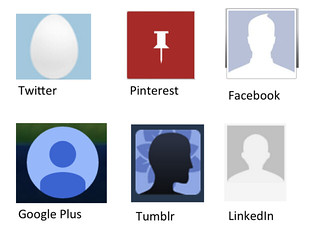While trying to obtain some information on some recent tweets, I ran a
TweetReach report* on my last 50 tweets-something I have never done for my own tweets. I found the tweets I was looking for, but I also was totally surprised by the the number of accounts that could have seen my tweets. The last 50 tweets in the last 4 days including my name reached 36,000 accounts. Doing a little math and extrapolation, I can reach 63,000 accounts in 7 days. I then had to ask a "What if.." question. Imagine the potential if every Extension professional had a significant online following and presence.
How many Extension professionals can say that could have had anything they talked about have the
potential of reaching 63,000 people in a week?
It is rather silly to think that every tweet was seen by every account. Here is expanding the "What if.." scenario. What if 10% of the 63,000 accounts saw tweets from me? That means 6,300 people in a week read something I wrote. How many Extension professionals could say that 6,300 people read something they wrote in the last week--or every week?
This post is not about me--it is a demonstration. It is about
What if each Extension professional had a a substantial and meaningful online presence?
Almost 4,000 people follow me. Although I believe some Extension professionals could have many more than 4,000 followers, I am assuming that most Extension people will have fewer people follow them in Twitter (or in any other network). Now, let's do more more math and estimation.
If each of the 15,000 Extension professionals had 2,000 followers, then as an organization, Cooperative Extension, we could have the potential of reaching 47 million people (20% of the U.S. population) in a week or a realistic 23,000 people in a week. By the way, 15 to 20% of the adults in the U.S. use Twitter, and many more use Facebook.
What if 2,000 followers is too aggressive? If each Cooperative Extension professional had a following of 1,000 people, then Cooperative Extension would have the potential of reaching 23 million people (10% of the population in a week). That percentage is very close to the percentage of adults who have said that they have used Cooperative Extension (according to the
Copernicus study).
This Google Doc Spreadsheet shows my calculations.
As I did this estimation, here are some of my additional thoughts in creating online presence.
- Creating an online presence does not exclude from having a strong local face-to-face presence.
- My interactions from week to week change a bit. For instance, this week I interacted with a few accounts I have never interacted with before. My engagement ebbs and flows as I learn from new people and interact on different topics. Therefore the people who read my tweets and interact with me are not always the same from week to week.
- Cooperative Extension and land-grants are missing out on a lot of potential because our faculty, educators, and professionals are not online--opportunities are lost.
- We are also not reaching our potential because Extension professionals who are online are being too conservative in reaching people whom they don't know.
- Most of my interactions are with individuals and not very often with organizational accounts. Interactions and sharing best happens with people -- not with organizations. Thus, the reason we need to pushing for individuals to work in social media.
- Twitter is my most active account and it is the easiest to measure interactions. I am also online in several other accounts. While Klout has many faults, it does provide some relative metrics. Using Klout, these are my accounts where I interact. These are listed in order of the "graded" interaction: Facebook, Instagram, LinkedIn and Google +. Any of these accounts can be used for connecting, conversing, and learning from others.
- I am not advocating that every professional has to be active on Twitter, though Twitter is by far the easiest to use. I am trying to make the point that if each Extension professional were to create a strong online presence, then we could become a lot better at reaching more people than we are currently.
- It has taken me 6 years to build a following of 4,000. I don't use any automated services for following or unfollowing. I have learned to be more liberal in choosing who to follow.
- As I become more active in any given network, I gain more followers and increase interactions.
- It takes assertive efforts to get the value of online networks and connecting with others.
- There is nothing Cooperative Extension is doing from a traditional standpoint that comes even close to reaching this kind of potential. The "Connectedness" discussion of my virtual keynote to Iowa State Extension, describes a part of Cooperative Extension's reach problem. In the Copernicus study, it is recommended that Cooperative Extension brand ourselves better. However, I firmly believe we must also be doing more individually.
If you don't know how to get started or how to improve your online presence, start by becoming involved in the
Network Literacy CoP.
*If you are wondering TweetReach accounts for duplicates. For instance, my colleague
+Rusty Presley (@rpresley) and I have some of the same followers. In the calculating the accounts reached, TweetReach takes in account duplicate followers.
 Roses are red, violets are blue
Roses are red, violets are blue


